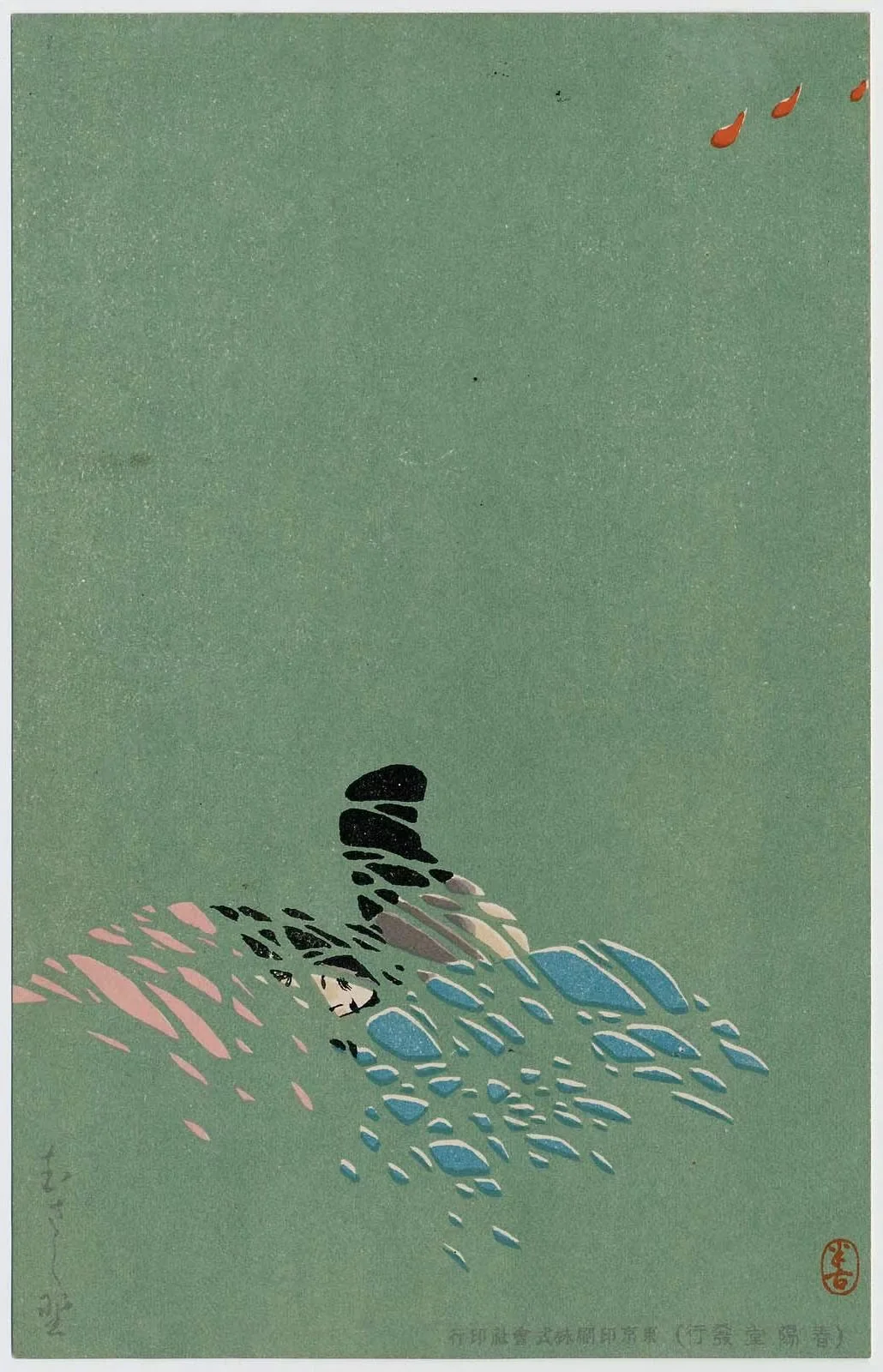Compression
02.08.2025
I find unifying theories/frames very pleasing. Like category theory, a theory for all of math. When I was in my high school math era my favourite proofs were those that crossed many seemingly-orthogonal fields (e.g. the theorems leading up to quadratic reciprocity in number theory). I love how complexity theory is a unifying theory that can tell us about the difficulty of literally any well-defined problem ever, in a way that is consistent across every reasonable computational model!
In conversation with Miles, he keenly noted that unifying frames are a form of compression/abstraction. We are able to remember more information in less space (one rule for both writing and drawing) -- I would guess that humans have a bias for high-information strings. Jason on great ideas: "summarizable in a single phrase".

Kajita Hanko, "Two Lovers Hiding in Long Grass as Flame Approaches"
I realise I also find compression and abstraction very pleasing when it comes to visual communication & art: see this simple block print postcard by Kajita Hanko above -- a perfect abstraction. One can barely see the two lovers' faces, one barely recognises the three red droplets as fire, but upon reading the title the whole piece comes together and becomes viscerally evocative in its minimality.
Compression guides my studying process: I use a technique that I call 'recursive decompression' to learn - inspired by notebook LM mind maps that do just that in an automated way. I enjoy exploring concepts through varying levels of granularity: starting with a few high-level points which capture the entire concept and repeatedly explaining each point in more and more detail. This feels like repeatedly decompressing information.
In the recent exam season, my most effective hack was writing down the entire syllabus for a course on as small a piece of paper as possible, and repeating it until the exam comes. In contrast with 'recursive decompression', this feels like 'recursive compression'. This usually ends up being a sheet of A4 by the exam. Concepts/proofs can eventually be triggered by single words (e.g. "tableau" for Cook-Levin Theorem) once intuition has been developed. (aside: the 'single paper method' also triggers a sense of 'space' that the concepts live in -- I can remember where something was written is on the page -- similar to the popular 'memory palace' method).
After going through Devouring Details, an incredible interactive design course, I realise that the best interactions are those that you don't have to think about -- because they are perfect abstractions of interactions that you've already done in the real world (like flipping pages of a book). Obviously if we implemented the mechanics of book pages into a phone, it'd probably be janky and heavy. But by adding horizontal swipe actions to MANY mobile actions, we subtly abstract the necessary details in flipping pages, and the interaction comes to us naturally.
This post is mostly a series of observations, but I'm curious to notice and use compression/abstraction in everything I do. I wonder if we could create an interface which dances between detail and abstraction, making us better thinkers and learners.